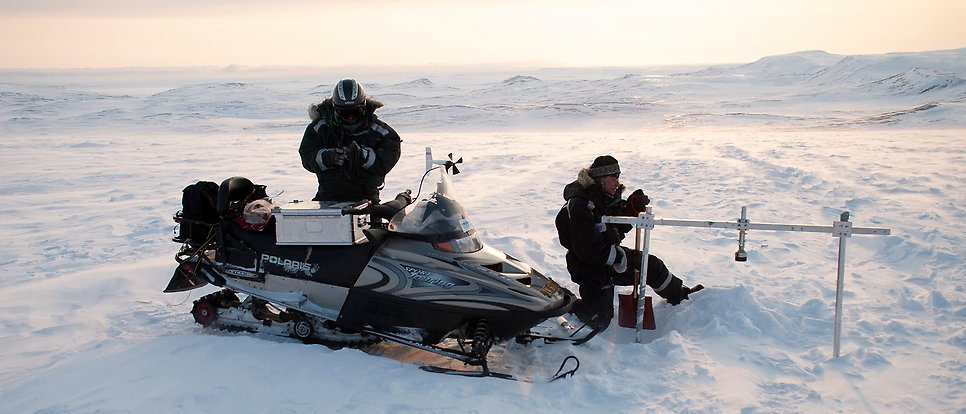Svalbard – the bullseye of global warming

Veijo Pohjola and his colleagues have launched an ice laboratory on Svalbard where they make measurements every year. Foto. Veijo Pohjola
Measurements have shown that Svalbard in the Arctic Ocean is the fastest warming area on Earth. Veijo Pohjola, Professor of Physical Geography, has been studying the ice on the archipelago since 1997. In the nearly 30 years he has been following developments, he has seen how the landscape has changed.
“We call it the ‘bullseye’ of global warming. This area has warmed six degrees since the beginning of the 20th century. At a station called Karl XII Island, the area is warming about 2.7 degrees every ten years. “It’s happening incredibly fast, the reason being that the North Atlantic is undergoing a lot of warming, sending warm water masses up towards the Barents Sea and causing a rapid change in temperature content,” explains Pohjola.
He and his research colleagues are principally trying to understand how the ice masses on Svalbard are affected by the warming climate.
“We’ve actually launched an ice observatory up there, where we conduct different types of analysis. So we measure the weather, the temperature of the ice and how much ice is present. We travel up there each year to conduct these investigations. Then we calculate how the ice mass is moving, how it melts and what might happen in the future,” continues Pohjola.
Ice serves as archive
He is also interested in the content of the ice itself. Glaciers serve as environmental and climate archives. By studying chemical substances stored in the ice – both organic and inorganic compounds – it is possible to track changes over a very long period of time. For example, it is possible to see how human emissions and other activities have affected the chemical composition of the atmosphere.
“When I started as a glaciologist and worked on my thesis in the 1980s, we only counted what was happening on the surface. It was easy to measure, as we could observe it. When satellites came along, we were able to make observations over huge areas. But what we didn’t see was the warming of the oceans, which leads to melting from below. It wasn’t until maybe ten years ago that we started getting good data on that,” adds Pohjola.
Accelerated melting
With the ice melting from below, the melting process will be much faster than has previously been recognised; Pohjola can also confirm this through his own observations. Among other things, he and his colleagues have observed that the melting of the underside of the glacier has increased significantly and is accelerating from year to year.
The warmer winters have also made their work more complicated.
“When I started travelling there in 1997, you could get to the ice field where we work in three hours by driving on the fjords, which were solid and stable with very thick sea ice. But that changed pretty quickly. So maybe ten years after I started, we were forced to plan which way to go each year, and now it’s completely impossible. The ice is too thin, if there is any ice at all. Now you have to make long detours, so a journey that took three hours to get to the work site now takes at least ten hours,” explains Pohjola.
Åsa Malmberg
